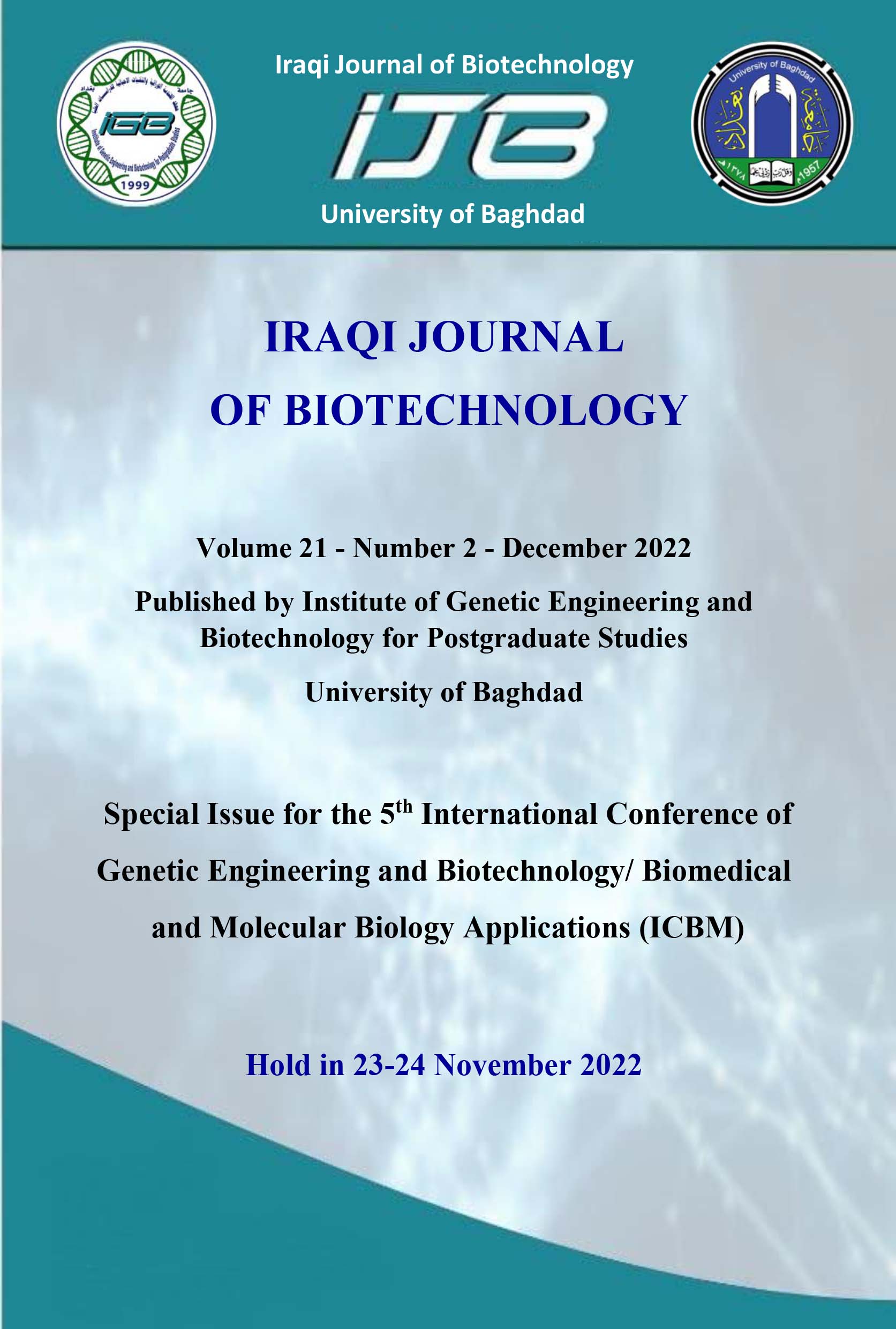Effectivity of Iron Oxide Nanoparticles Synthesis by Intracellular Lactobacillus as Antibacterial Agent against Pseudomonas aeruginosa
Abstract
The aim of this study is to demonstrate the biosynthesis procedure of iron oxide nanoparticles (Fe2O3 NPs) by using intracellular components produced from environmental isolate Lactobacillus Plantarum as a reducing and stabilizing agent studied in the laboratories of the College of Science, University of Baghdad from November 2021 to March 2022. Take 1 g of ferric sulfate was added to 10 ml from intracellular for synthesis nanoparticles. The biosynthesized Fe2O3 nanoparticles have presented many applications such as catalysis, biosensing, anticancer, biomedical, etc. The study of optimum conditions for the synthesis of Fe2O3 was characterized by different techniques, such as UV-VIS, AFM, XRD, FTIR, and FE-SEM. The wavelength of biosynthesis of Fe2O3 from intracellular by using UV-VIS is (304 nm), Image FE-SEM displays Spherical Fe2O3 NPs in nano-cluster. The antibiotic susceptibility test of P.aeruginosa isolates was shown to be resistant to Tetracycline, Trimethoprim-Sulfamethoxazole, Ceftazidime, and Chloramphenicol, while sensitive to Amikacin, Norfloxacin, Meropenem, and Ciprofloxacin, and the effect of Fe2O3 NPs from intracellular on bacteria Pseudomonas aeruginosa on an inhibition zone 15 mm.


